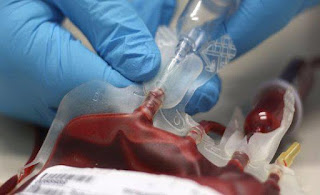Plant Stem Cell Extraction: Preserving Nature's Regenerative Abilities
Introduction to Plant Stem Cells
All plant cells have the remarkable ability to differentiate into different cell types and carry out specialized functions. At the root of this flexibility lies the plant stem cell. Located within plant meristems, these cells have the capacity to either remain stem cells or transform into various other cell types like xylem, phloem or epidermal cells. Let us explore the fascinating world of plant stem cells and their immense potential.
What are Plant Meristems?
Meristems are zones of actively dividing cells in plants that are responsible for post-embryonic growth. There are three main types of meristems - apical, lateral and intercalary. The apical and lateral meristems are responsible for primary growth in plants by vertically extending roots and shoots. Intercalary meristems drive the elongation growth between nodes and internodes in grasses. All meristems harbor pluripotent stem cells at their centers that fuel continuous development.
Properties of Plant Stem Cells
Plant stem cells, like their animal counterparts, have unique characteristics that set them apart from differentiated cells. They are totipotent, meaning a single stem cell is capable of regenerating the entire plant. Plant stem cells also exhibit long-term self-renewal through asymmetric cell division to generate another stem cell and a progenitor cell. Their cell walls are less rigid to allow rapid divisions. These cells have high mitochondrial activity to produce energy for growth and differentiate based on cellular position and signaling molecules.
Using Plant Stem Cells in Agriculture
The totipotency and robust regeneration ability of plant stem cells opens exciting avenues for agriculture. Researchers can isolate meristem cells and genetically modify them using techniques like Agrobacterium-mediated transformation to develop stress- and pest-resistant crops. Micropropagation uses stem cell proliferation for mass production of elite disease-free planting material. Scientists are also working on generating synthetic meristems from single cells that can be freeze-dried into seeds for long-term storage and transportation of valuable crop varieties. Overall, stem cell applications promise more resilient and productive farming worldwide.
Medical Applications of Plant Stem Cells
Plants hold great value for medical science due to their biomolecules. Now, plant stem cells are unlocking novel therapeutic avenues as well. Certain stem cell extracts promote wound healing by stimulating collagen production. Effective anti-aging compounds have been isolated from stems of Korean ginseng. Transgenic roots engineered to synthesize cost-effective biopharmaceuticals show promise. Clinical studies indicate anti-inflammatories from bamboo extract may treat osteoarthritis. Researchers speculate plant stem cell banking and 3D tissue culture using these versatile cells may someday revolutionize regenerative medicine like growing replacement human organs.
Challenges and Future Possibilities
While plant stem cells present boundless potential, harnessing it fully is challenging. Developing robust genetic and cellular manipulation procedures tailored for each species remains a priority. Strict regulations govern transgenic crops and drugs. Public acceptance of novel foods produced using stem cell techniques also needs addressing. Looking ahead, as stem cell biology unravels the complex signaling networks governing plant growth and development, customizing crops for precision farming applications seems achievable. Stem cell niches may divulge regenerative secrets enabling sustainable production of high-value natural products for human health. With continued progress, plant stem cells are primed to uplift agriculture and medicine globally.




Comments
Post a Comment